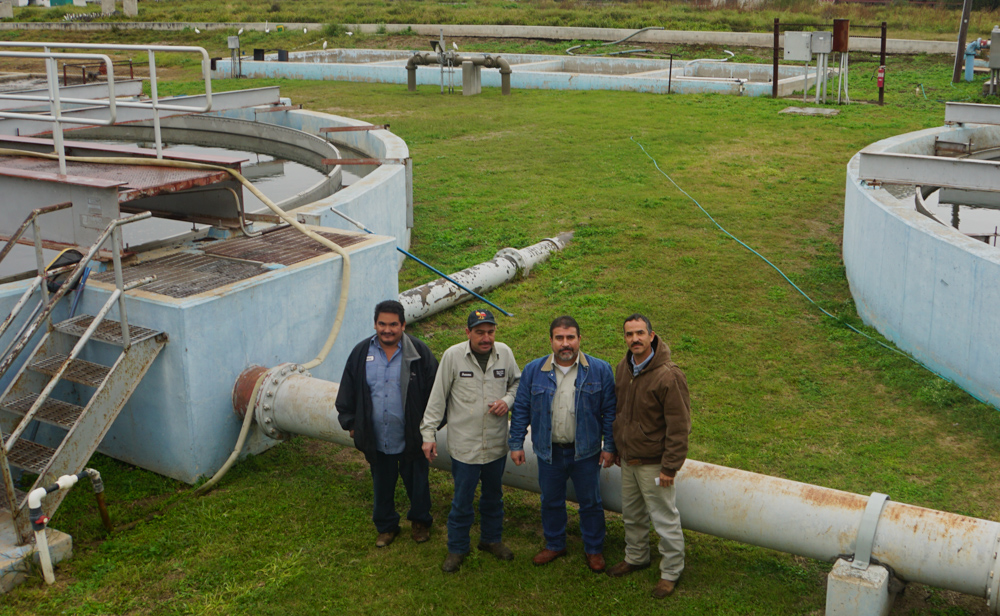by Colin McDonald | Feb. 11, 2015
The Rio Grande is disappearing. Demand for water is growing as snow packs shrink, rain patterns shift and average temperatures rise faster than they ever have in the past 11,000 years.
Read more
When Pedro Alvarez was young, smuggling across the Rio Grande was about old refrigerators going south and tequila coming north. The riverbank was a place you could camp out for a couple days and only worry about keeping the fire going and the hooks baited.
Now, at 68, he won’t visit his family’s own park at night.
The park is named 17K in honor of Alvarez and his 16 siblings. Pedro is the third oldest and the first son. He became a second parent to his younger siblings. The family had a school bus instead of a station wagon or van. Summer vacations were spent driving to California to work in the vineyards.
They all grew up playing in and along the Rio Grande. Camping on the riverbank was a birthright.
Today, none of the Alvarez family will go close to the river at night. They listen to their elders.
“In the daytime you will be all right and you can see everybody,” Alvarez said of visiting the river.
Alvarez has arthritis in his knee and walks with a cane. At night, he is afraid he could not get out of the way if smugglers were moving drugs or federal agents were attempting a bust.
For Ruben Villarreal, Rio Grande City mayor, that is the new reality on the river. His city is 10 miles downstream of 17K and the cross-river trade only increases with the miles.
“When I was growing up if you saw someone fishing, they were fishing,” he said.
Today few people fish. Those who do are suspected of being scouts for the smugglers. On this cold drizzly day, the only people I saw were Border Patrol agents and National Guard troops on the left bank watching the right bank and young men on the right bank watching the left.
When I paddled through, most of the Border Patrol agents seemed to be expecting me and returned my waves. The men in Mexico did as well and were not bashful about asking what I was doing and why. They immediately repeated my answers into their phones.
I lost my interest in paddling slowly or pulling over to take breaks. The laid-back feeling rivers are famous for was gone. This is a work zone.
When Mayor Villarreal started getting involved in city politics 14 years ago, developing the Rio Grande as a tourist destination was one of his top three objectives.
Now he is in a fight to stop construction of a border wall which would cut off the river.
He calls the wall a 12th century technology being applied to a 21st century problem. He points out that ladders and tunnels defeated walls nine centuries ago. Those advancements have not been forgotten.
He agrees there is a problem on the border. He does not feel safe on the river where he used to feel at home. He was happy to have two Border Patrol agents standing by when we talked.
But he believes the wall will cut Rio Grande City off from its namesake and biggest asset. He fears it will become a scar of steel promoted by politicians who live far from the river, don’t understand the border and just want to say they did something to secure the country.
Instead, he wants more people. He wants more Border Patrol agents, troops and state law enforcement. He wants more cameras, blimps and ground sensors.
He wants his river back.
To comment on this post or ask a question, please visit the expedition's Facebook page.





As they travel, Colin and Erich are taking water samples for the following periodic water quality tests. In partnership with The Meadows Center for Water and the Environment’s Texas Stream Team Program at Texas State University, the results will be added to a public database it helps maintain for research and monitoring water quality.
While making his way to the Gulf of Mexico, Colin will be periodically activating a device that uses satellite technology to share his current location. Use this map to see where he traveled on this day.
| Check-In | Time of Check-In (CST) | Latitude | Longitude |
|---|---|---|---|
| #1 | 7:43 a.m. | 26.39589 | -98.92055 |
| #2 | 8:48 a.m. | 26.38742 | -98.9234 |
| #3 | 10:56 a.m. | 26.3606 | -98.87976 |
| #4 | 11:52 a.m. | 26.36646 | -98.82944 |
| #5 | 1:46 p.m. | 26.36842 | -98.80594 |
To report on and understand the haphazard irrigation system the Rio Grande has become and the changes it is going through, Colin decided the best approach would be to travel the length of the Rio Grande by foot and small boat.
He knew it would give him a unique perspective on a river that few understand. It did require many long days of moving slowly and camping on muddy riverbanks, but Colin likes that sort of thing.
The benefit was it provided access to people who wanted to share their stories and experiences with the Rio Grande. Via Facebook and chance encounters, Colin made instant friends who opened their homes. They provided help from loaning their trucks to their cell phone contact lists to help tell the story of the Rio Grande.
The trip would not have been possible without their help, along with the dedicated assistance of David Lozano, Jason Jones and Daniel Dibona, who drove thousands of miles to get people and boats in place.
Contributors